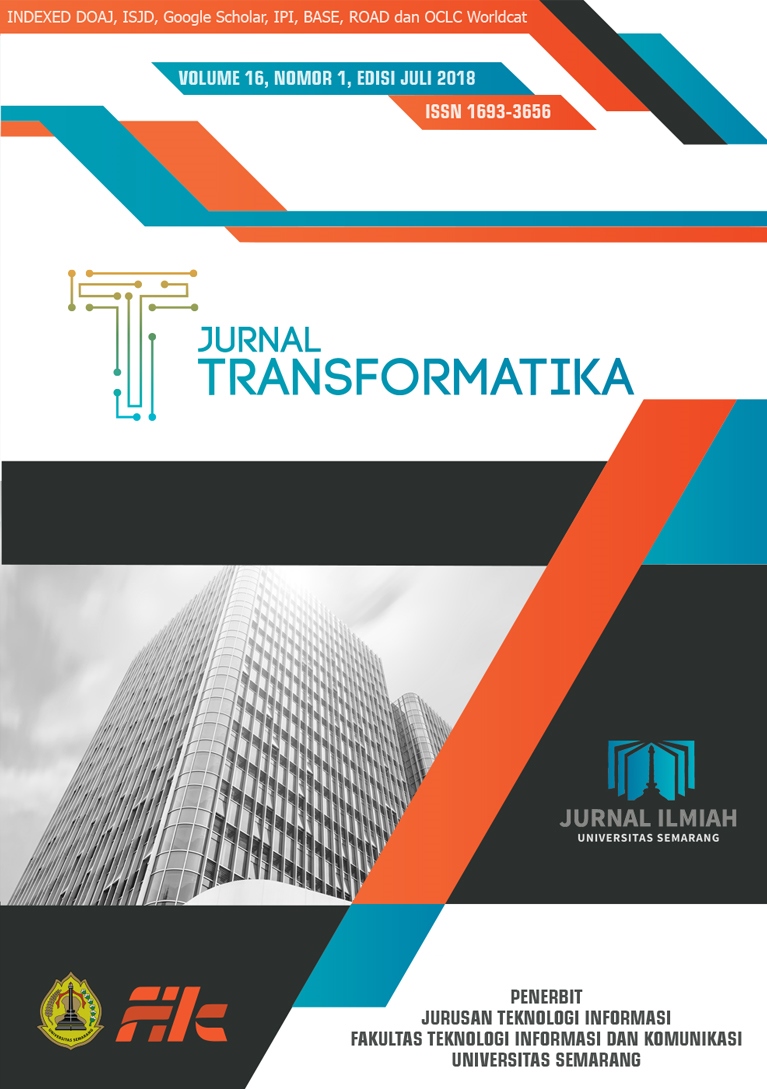Implementasi Twitter Bootstrap dalam Pengembangan Aplikasi Web E-Commerce (Studi Kasus Toko Putra Reban Kendal)
DOI:
https://doi.org/10.26623/transformatika.v19i1.3541Keywords:
twitter bootstrap, e-commerce, responsiveAbstract
This study aims to apply twitter bootstrap in an e-commerce web so that the web display becomes more responsive, that is, it can provide a display according to the device used to access the web. The object of this research is the Putra Reban Store in Kendal which markets local art equipment and supplies, especially masks.
The system development method used in this research is the Scrum method with stages including product backlog, sprint backlog, sprint and working increment. This method was chosen because it can save system development time and can transform a business that is difficult to measure into one that is easy to develop. The system is designed with 2 actors, namely admin and customer. Admin has access rights to manage product data, customer data, and order data, while customers have the right to access product data and make order transactions.
With this developed system, it is easier for Putra Reban Stores to market their products because product descriptions and product availability stocks can be informed more easily and accurately. With complete and accurate product information, it will also be easier for customers to make transactions.References
Abdullah, T., Tantri, F. Manajemen Pemasaran. Jakarta: Grafindo. 2016.
L. F. Rhozi, Sistem Pendukung Keputusan Pemilihan Smartphone Android Menggunakan Metode Simple Additive Weighting (SAW), Artik. Skripsi Univ. Nusant. PGRI Kediri, pp. 59 65, 2016.
D. S. W. Iin Mulyadin, Sistem Pendukung Keputusan Pemilihan Smartphone Menggunakan Metode Simple Additive Weighting, Cahaya Tech, vol. 7, no. 2, pp. 88 101, 2018.
A. Mukhlasin, Sistem Pendukung Keputusan Pemilihan Smartphone Menggunakan Metode Simple Additive Weighting (SAW) Berbasis Web, Pros. Semin. Nas. SISFOTEK, no. September, pp. 228 236, 2018.
D. M. Khairina, D. Ivando, and S. Maharani, Implementasi Metode Weighted Product Untuk Aplikasi Pemilihan Smartphone Android, J. INFOTEL - Inform. Telekomun. Elektron., vol. 8, no. 1, pp. 16 23, 2016.
J. Yosef, Latif Ricaro; Susilo, Pengembangan Aplikasi Pemilihan Smartphone Android Menggunakan Metode Weighted Product Berbasis Android, J. Inform. dan Bisnis, vol. 7, no. 2, pp. 59 65, 2016.
G. M. Putra, N. Irawati, S. Informasi, and S. Royal, Analisis Pemilihan Handphone Rekomendasi Dengan Metode Weighted Product, Semin. Nas. R. 2018, vol. 9986, no. September, pp. 199 204, 2018.
R. Kusumadewi, Sri; Hartati, Sri;Harjoko, Agus; Wardoyo, Fuzzy Multi-Attribute Decision Making (Fuzzy MADM), 1st ed. Yogyakarta: Penerbit Graha Ilmu, 2006.
Kusrini, Konsep dan Aplikasi Sistem Pendukung Keputusan, 1st ed. Yogyakarta: Penerbit Andi, 2007.
Kristanto, A. Perancangan Sistem Informasi dan Aplikasinya. Yogyakarta: Gava Media. 2018.
Ladjamudin, A. B. Analisis dan Desain Sistem Informasi. Yogyakarta: Graha Ilmu. 2013.
Whitten, J. L., Bentley, L. D., and Dittman, K. C. Metode Desain dan Analisis Sistem. Yogyakarta: Andi. 2004.
Sulistyorini, P. Pemodelan Visual dengan Menggunakan UML dan Rational Rose. Jurnal Teknologi Informasi DINAMIK. 2009; XIV(1): 23-29.
Budi, D. S., Siswa, T. A., & Abijono, H. (2016). Analisis Pemilihan Penerapan Proyek Metodologi Pengembangan Rekayasa Perangkat Lunak. Jurnal Teknologi Informasi DINAMIK. 2016; 5(1): 24-31.
Rubin, K. S. Essential Scrum: A Practical Guide to The Most Popular Agile Process. First Edition. Michigan: Addison-Wesley. 2012.
Downloads
Published
Issue
Section
License
Authors who publish with this journal agree to the following terms:
- Authors retain copyright and grant the journal right of first publication with the work simultaneously licensed under a Creative Commons Attribution License that allows others to share the work with an acknowledgement of the work's authorship and initial publication in this journal.
- Authors are able to enter into separate, additional contractual arrangements for the non-exclusive distribution of the journal's published version of the work (e.g., post it to an institutional repository or publish it in a book), with an acknowledgement of its initial publication in this journal.
- Authors are permitted and encouraged to post their work online (e.g., in institutional repositories or on their website) prior to and during the submission process, as it can lead to productive exchanges, as well as earlier and greater citation of published work.

Transformatika is licensed under a Creative Commons Attribution 4.0 International License.


